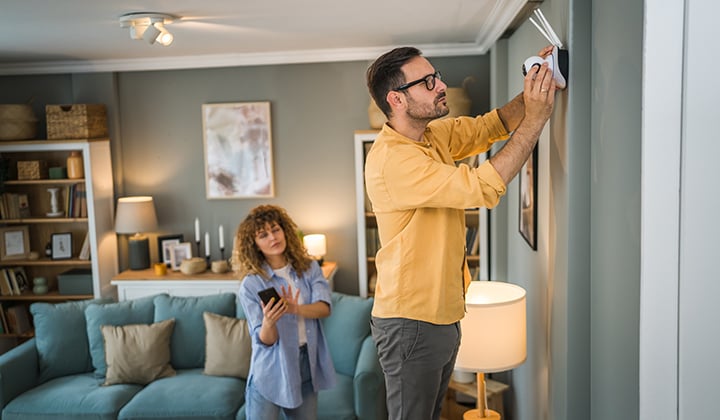Get updates
Have a parenting hack to share? Or a topic you'd like to see?
Hidden dangers: Protecting your home from unseen threats

As parents, we strive to create a safe and healthy environment for our children. However, some threats to our homes are not always visible. Understanding these unseen dangers and knowing how to mitigate them can make a significant difference in the well-being of our families. Here are some common unseen environmental threats in homes and practical steps to address them.
Natural gas leaks
Natural gas leaks can be hazardous and are often undetectable without proper equipment. Regularly inspect gas appliances like stoves, furnaces, fireplaces and water heaters. Ensure they are serviced annually by a licensed professional to prevent leaks and ensure safe operation.
Indoor air pollution
Indoor air pollution can stem from various sources, including household products and poor ventilation. To reduce indoor air pollution:
- Use safe cleaners like baking soda and vinegar, and avoid products that produce small particles, such as candles, air fresheners and incense.
- Ventilate your home well and change furnace filters every 2-3 months.
- Avoid environmental tobacco smoke by smoking outside and away from children.
Mold and Moisture
Damp indoor conditions can cause respiratory issues and other health problems, and can also lead to mold growth. To prevent mold growth:
- Use a simple humidity gauge to see what your indoor humidity is. Manage moisture by maintaining good humidity levels (30-50% relative humidity).
- Clean moldy areas with warm soapy water and replace damaged materials with moisture-resistant ones.
Carbon Monoxide
Carbon monoxide (CO) is referred to as the “silent killer,” as it is odorless and tasteless. To protect your home:
- Install CO alarms on each livable level and outside bedrooms.
- Purchase alarms that have visual and auditory alerts and a back-up battery in case of power outages.
- Test alarms monthly to ensure they are working.
- Have gas appliances inspected annually by a licensed professional.
Radon, lead and asbestos
These substances can pose serious health risks and may be found in various parts of the home:
- Radon: Found naturally through degrading rock material under homes. Test your home using state-provided kits and consider mitigation if levels are high.
- Lead: Found in older homes, particularly in paint on windows, doors and siding. If your home was built before 1978, have it inspected for lead-based paint by a licensed assessor.
- Asbestos: Found in building materials such as furnace ducting, siding, roofing materials and small tile flooring. Test these materials before remodeling and avoid disturbing surfaces that may contain asbestos.
Ensuring a safe home environment
There are lots of other quick things you can do around the house to make sure it’s the safest, healthiest environment for your family. Consider things like:
- Using child locks on appliances and cabinets where chemicals and medications are stored.
- Removing any unnecessary clutter that may cause slips, trips or falls.
- Using gun locks and storing ammunition separately from firearms.
- Installing furniture straps on any furniture that may easily tip over.
- Repairing exposed wires and missing electrical outlet covers.
For a full checklist on things that will keep your home safe, click here.
For additional resources, information on healthy home assessment and more, visit the Healthy Homes Program at Children's Mercy Kansas City. Here’s to making your home your happy and healthy place!
